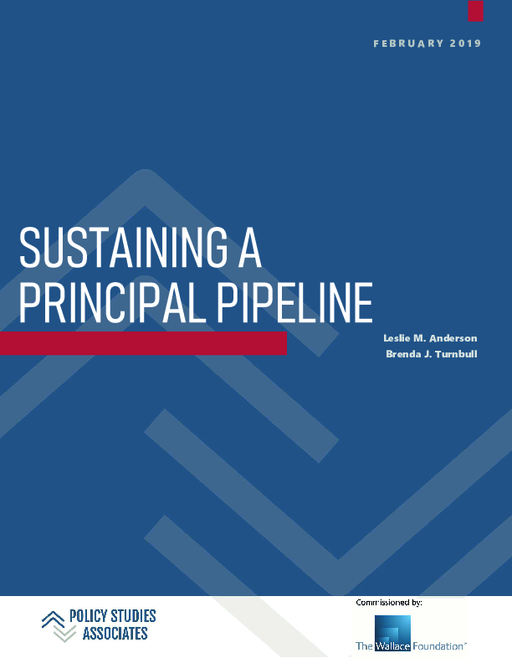Research Approach
This study looks at the six school districts that took part in the Principal Pipeline Initiative two years after foundation funding for the effort ended. Key sources included a survey of principals and interviews with district leadership development decision makers, principal supervisors, university officials, and others. The research assesses continuity and change in district policies and practices and in principal perceptions as of 2018. It asks:
- To what extent and in what ways are districts still carrying out four key components of the Principal Pipeline Initiative?
- What changes have they made to their pipelines, and why?
- What do principals say about their preparation, hiring and placement, evaluation, and support, and how is it similar to or different from key findings that the researchers reported earlier?
Researchers visited each district in spring 2018 and interviewed decision makers in the office responsible for leadership development, principal supervisors, other high-level officials, coaches or mentors, and university officials who have liaison roles with a district. Interviews were transcribed and systematically analyzed, ensuring that researchers captured information about each component and could triangulate across the perceptions of different individuals and offices. The research team sought generalizations across districts to the extent possible, as well as notable exceptions to an overall pattern. Individuals were assured of anonymity in the reporting, and therefore this report masks the identity of districts in which the combination of district name and respondent’s role could make the individual source easily identifiable. All quotations in this report come from interviews conducted in spring 2018. The survey, also administered in 2018, was a shortened version of the one that the researchers administered to novice principals annually in 2013, 2014, and 2015. The survey included questions on the respondent’s experiences and perceptions related to preservice training for school leadership, the hiring and placement process, principal evaluation systems, and support from supervisors and coaches or mentors. In 2018, researchers administered it to veteran principals as well as novices. All principals were surveyed in five of the districts; for New York City the researchers drew a random sample and oversampled principals who started on the job between 2015 and 2018. Response rates, overall and by district, appear in Exhibit 1 in this report.
Survey analyses presented in this report are based on a weighting procedure that gives equal weight to the aggregate responses from each district. This is the same procedure used in previous reports on implementation of the Principal Pipeline Initiative. Exhibits throughout this report show the weighted number of respondents as “N(w).” Many of the survey analyses here focus on novice principals, specifically those who started on the job during the two or three years (depending on the question) before February 2018. This allows the research team to compare the responses of current novices with the findings reported from surveys of novices conducted in 2015 and earlier. Thus, for example, researchers compare perceptions of the principal’s own fit with their school for three different groups of novices: those who started on the job between March 2010 and February 2012; those who started between March 2013 and February 2015; and those who started between March 2016 and February 2018. In each case, the perceptions are those that the respondent reported the first time they were surveyed, whether in 2013, 2014, 2015, or 2018. In this report’s comparison of preservice preparation across multiple cohorts of incoming principals, researchers use the responses gathered in 2018 from all principals, novice and veteran.









